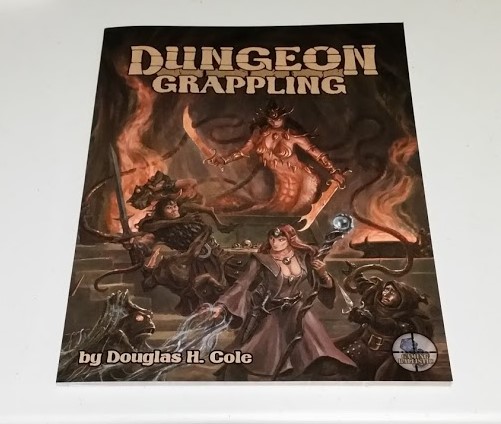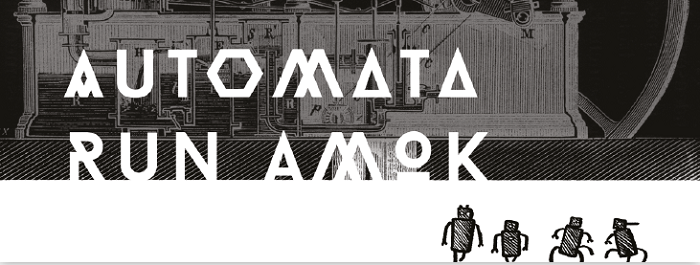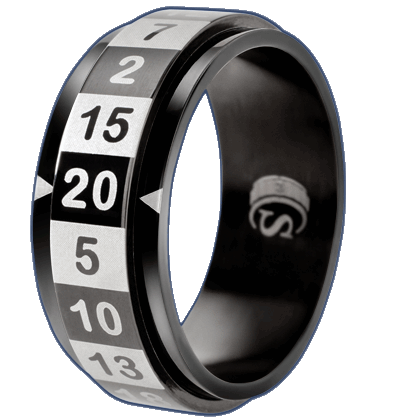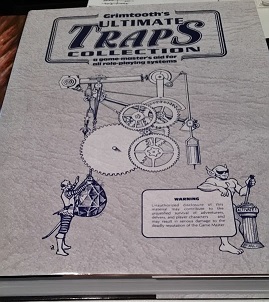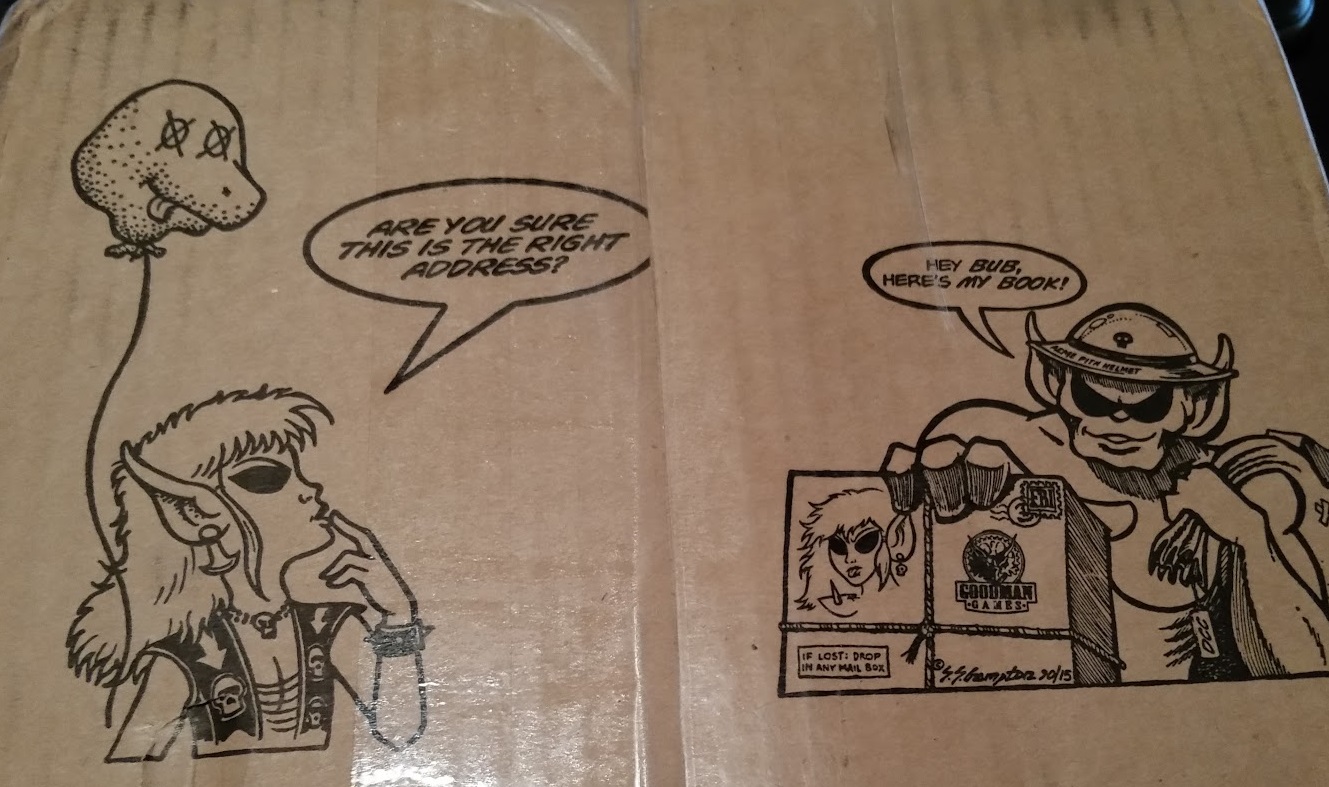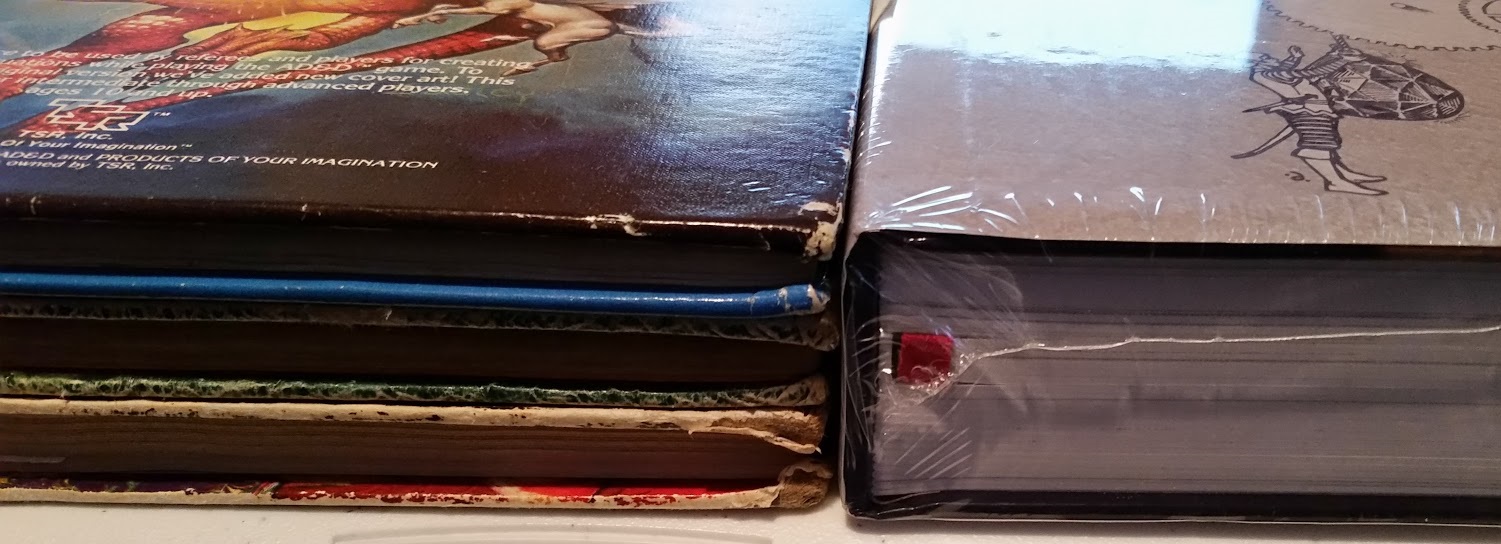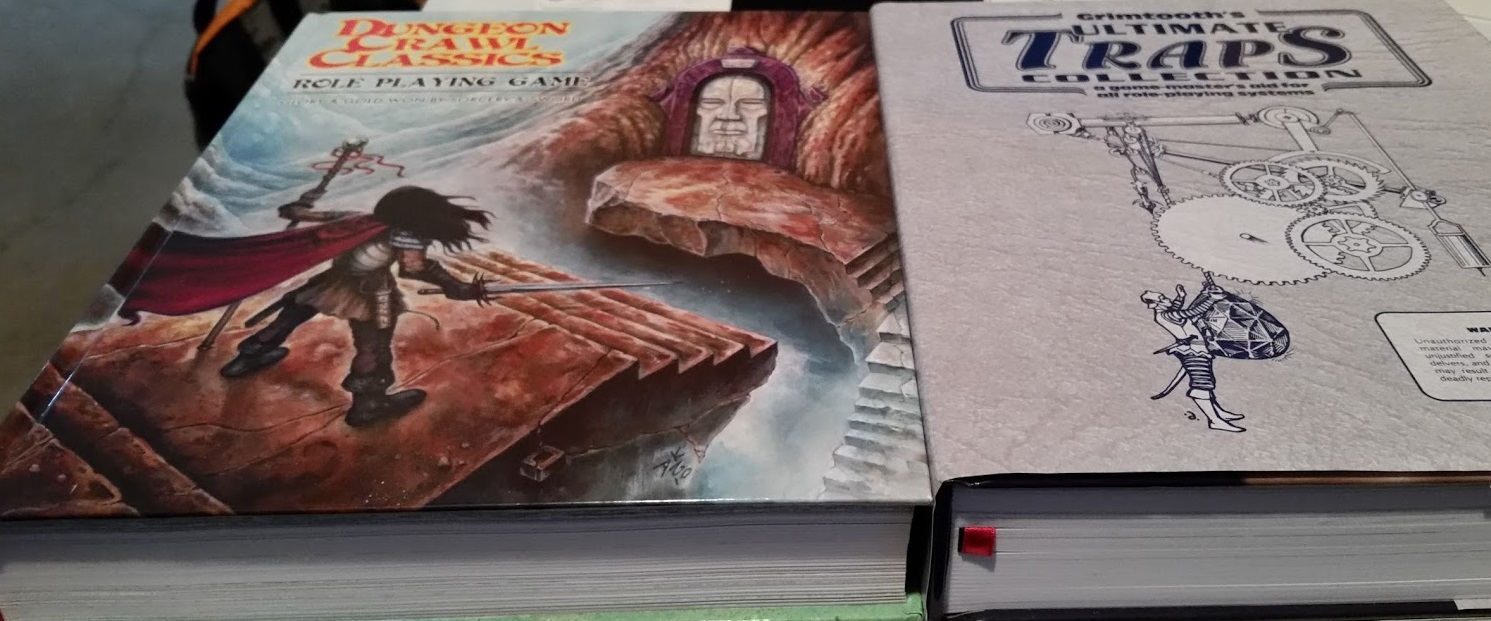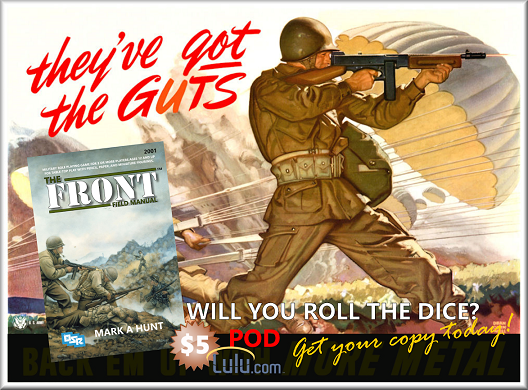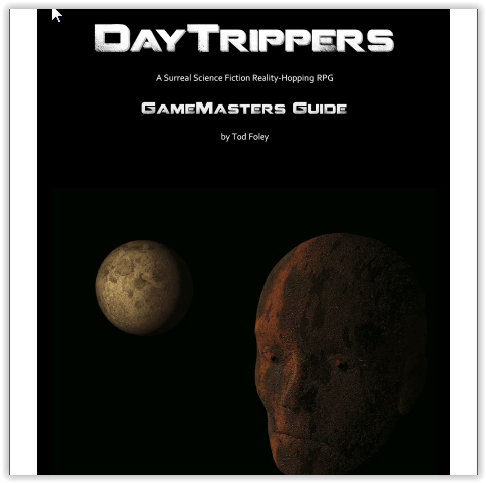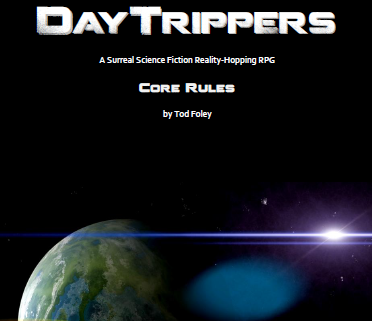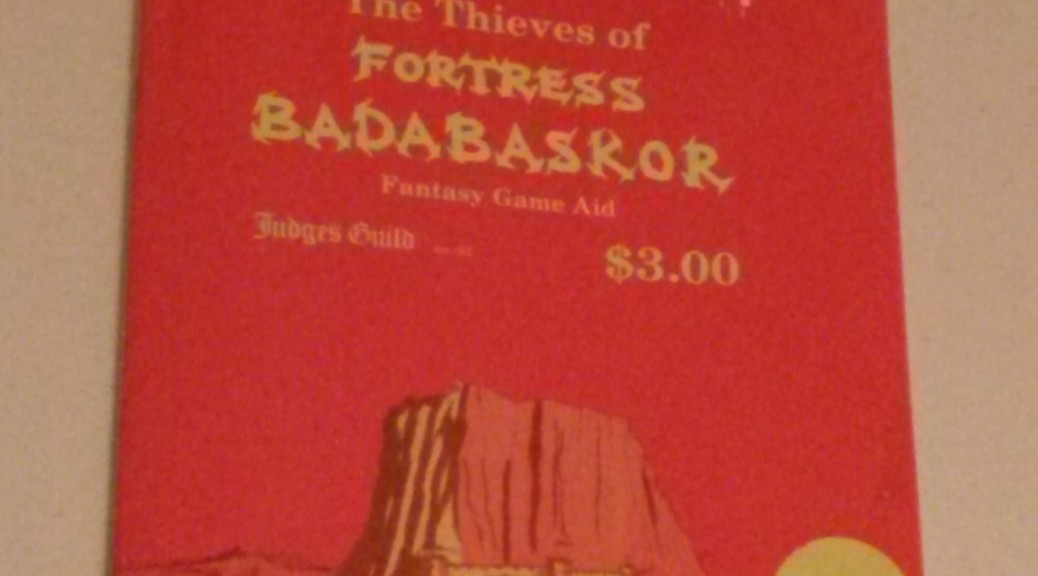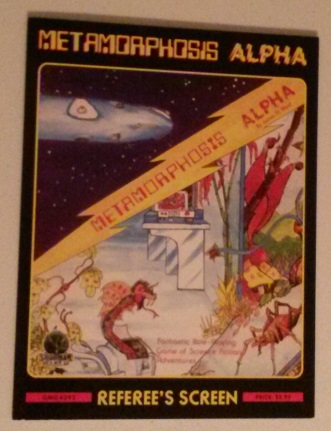I did a review of the Day Trippers Planet Generator back in May. The author contacted me to review the Core Rules and Game Masters Guide.
I was interested to see what Day Trippers was, and why the name. Before I could get the time to read what I had downloaded, I saw that others had posted their own reviews of Day Trippers, so I made sure to avoid reading them until I had a chance to see it for myself. I read and reviewed the Core Rules before this review. This should help me understand how the players see the game, verses the “inside information” in the GM Guide.
I was concerned about how long it would take me to get through the books, but the Core Rules is only 44 pages. I got through half of it in one sitting. The other half I finished in another sitting.
I went in-depth in this review, far different from how I would review a movie. This should give you an understanding/feel of the game and creating characters and resolving actions.
The layout is clean and it is easy to read on my tablet. It has good art, and no typos or grammar errors that I noticed. The Table of Contents is hyperlinked. The index is not hyperlinked. This is not an issue, I am not aware of any index that is hyperlinked. The Table of Contents does not include the character sheet and ship sheet on the last two pages of the PDF. The rules are Creative Commons 3.0 UNPORTED LICENSE (CC BY 3.0). THEY ARE OWNED BY EVERYONE AND NO ONE. HTTP://CREATIVECOMMONS.ORG/LICENSES/BY/3.0/
It starts with a story to set the history and tone. It’s the campaign world setting. It was interesting and let me in on the origin of this concept in the mind of the game creator. As with any “default” campaign setting, it is up to the user to use it or not. In short, crazy super genius invents method to travel between dimensions. Once he proves it, other individuals, corporations, and governments get involved. There are locations that others find and keep a secret to use to their own advantage, in addition to well-know places, and places as yet undiscovered.
The premise behind the game is slipping between dimensions, different realities, planets, etc. It reminds me of the times older episodes of Dr. Who (AKA Tom Baker) moved sideways to other realities in the TARDIS rather than through normal time and space. I also was reminded of the TV show Sliders, although I think I only ever caught one episode of that show. It also reminds me a bit of the TV show 7 Days where they could only travel back in time seven days.
What I find hilarious in the backstory for how such travel was discovered, the acronym for the first device in my mind is TRAP, although it is referred to as TRA Pod in the text. I then imagined Admiral Akbar, “It’s a TRAP!” I often come up with weird acronyms others didn’t intend.
There are terms used in the rules, Slip Space for the space/stuff traversed between starting point and destination, and Slip Pods for the devices that carry people through Slip Space.
There are five variations on slip travel, called Slips: Cartesian, Temporal, Para Terran, Subjective, Compound
- Travel across the universe in this home reality. That is travel to other planets. (Cartesian)
- Alternate Earths/Parallel Universes (Para Terran)
- Time Travel, but limited to the time line of Earth 1. (Temporal)
- Dream Worlds (Subjective)
- The Multiversal Chao (Compound Slips – Which is a combination of two or more other kinds of slips.)
One Slips into one of 6 Nodes: Known Planets, Unknown Planets, Time Travels, Alternate Earths, Dream Worlds, and The Multiversal Chao. Dreams reminds me of the movie Inception, or places where stories are real. There is more than one story I am aware of about the characters and places in fiction are real. With all of these possibilities, there is no shortage of potential adventures. One can do any genre with these rules: science fiction, steam punk, western, spy, gangsters, fantasy, suspense, horror, sword & planet, etc.
The origin of the title of the game, Day Trippers, is that one is limited to 24 hours for the maximum length of time one can stay in their destination. If one does not return in that time, they cease to exist in the originating point. My question is, if they stay in this dimension/universe/timeline, that would mean they cease to exist, but does that mean they are trapped in different dimensions/realities if they fail to return? This is not clear to me in the Core Rules. As I read it, I would rule they are trapped in that other dimension. I will look to see if this is clarified in the GM Guide.
Character generation is a point buy. Each character begins with 100 CP (Character Points) to spend building characters. An interesting concept is that these CP can be saved and used during play for Progressive Character Building. CP are used to generate the stats for players, buy skill levels, and purchase equipment, just like using money.
There are ten classes: Amateur Explorer, Gonzo Writer, Grad Student, Politican/Nobility, Special Forces, Celebrity/Entertainer, Government Agent, Scientist, Soldier, Tourist.
There are six stats (ability) scores: Brains, Charm, Grace, Health, Might, Psyche.
The interesting thing about ability scores is that they all start with one and then CP can be used to bump them up to a maximum of six. The number one through six represents the number of d6’s to roll for each challenge/impediment one faces in the game. To bump a score from 1 to 2 only costs 5 CP, but adding more increases the cost. To bump the score of a starting stat to 5 costs 100 CP and 6 costs 200 CP.
CP is equal to one unit of currency, called a Mega, which equals one million dollars. One can go into debt to build and equip a starting character. The debt has to be paid at one mega a month. Experience Points, XP, can be used to improve one’s character or pay off debt. The equivalence of each CP/Mega/XP makes it easy to figure out and track.
The Total Character Value (TCV) is the sum of CP and XP spent to develop your character. This would be analogous to level in other games. Similarly, Potential is the sum of unspent CP and XP.
There is a list of skills that have a note of one or two stats that apply to their use. Some skills assume the presence of a kit, for example a doctor has a bag, a technician has a tool kit, etc. New skills can be added with GM agreement, and must specify one or two applicable stats for their use. Skills also go from 1-6.
Classes can also be used to boost stats and skills before adventuring begins. Stats and skills get boosted by one and debt is increased.
Crew is the name for NPCs, they have 1 in all stats and cost one Mega or CP for a year of service. Additional stats, skills, and gear can be purchased for them as with characters. “[T]hey are assumed to have an unglamorous but serviceable place to live.” This same assumption is made for characters.
Rank applies to those from military, political, or secret careers, also from 1-6. My only issue with the rank, is for military, it used army/air force/marine ranks for levels 1-5, and level 6 is admiral, a navy rank. An admiral of the same number of stars is equivalent rank to a general of the same number of stars, so I would change level 5 to colonel and make level 6 general. If you want navy ranks list them. Keep in mind that a navy captain is equal to an army colonel.
Retired rank translates to last rank-1 for resolving actions.
Fame is a stat that indicates how well known a character is and there are benefits from the level of fame from 1-6. One has to make an effort to maintain their level of fame, either by spending megas or doing something to stay in the public eye. It boosts charm rolls.
Debts can be to legitimate sources like banks, or loan sharks. The difference is in how they handle late payments. Such as, legal action vs. broken legs. Not paying debts on time can lower one’s fame.
Life Shaping is done via events that shape the life of a character. These events can be presented before or during play, or even between sessions. LifeShapers can be used to deal with problems, with a reasonable explanation. There are twelve slots available for LifeShapers, so one can only add so many.
Gear ranges from 0-6, with 0 being standard items that add no bonus to actions. Gear with levels 1-6 are increasingly more expensive and add plusses to rolls.
There is a list of sample characters provided that can be used to get players started, or be used for one shot adventures, etc.
Action resolution begins with difficulty levels from 1-10, 1 being a no-brainer to a 10 being insane. Any difficulty of 7 or higher is impossible without leveled skills and/or gear, since the max stat is 6. You roll the number of dice equal to the appropriate skill and keep the highest. This just improves your odds of rolling a 6.
After the roll is determined, the appropriate/applicable skill, gear, rank, and fame are added.
Actions can be unopposed or opposed. Unopposed is more direct. With an opposed action the “defender” also rolls.
There are five possibilities for all results:
- Miss by more than 1 No, AND (something negative happens)
- Miss by 1 NO, BUT (something positive happens)
- Hit Exactly YES, BUT (something negative happens)
- Exceed by 1 YES (Nailed it precisely)
- Exceed by more than 1 YES, AND (something positive happens)
This makes it easy to determine the “flavor” of successes and failures. For example, taking out the guard in one strike, but he makes a noise that alerts other guard(s).
Combat works similarly to actions, but level of armor and weapons play into it.
Other players can help the character performing an action, such as opening doors. The helper makes a roll, but helping could be not helping. How many movies, TV shows, or real life situations have you seen where someone says, “Please stop helping!”?
Damage reduces stats by one, and since they are in alphabetical order, you work your way down the list. If there is multiple damage in one action, take one from the first stat, one from the next and so on. When a stat hits 0 you are stunned, when 3 stats hit 0, you are dead.
There are no luck points to burn to avoid a bad situation. It is all up to the player(s) using their wits to make their current mix of stats, skills, and gear work to their advantage. Being able to come up with a plausible reason why a certain stat or skill applies in a given situation is key.
Healing is likewise simple, if only one stat is down a single point, three days of rest. More than that takes longer rest, involves hospitals, doctors, spending Megas, and possible devices found in one’s travels. Healing heals one point in each stat in alphabetical order.
An exception to healing is damage to the Psyche, which requires therapy and/or medication and can take months or years. It requires a level 5 difficulty roll to heal psyche after each month of rest. This is an interesting idea for the horror/Cthulhu type genre where one can regain sanity.
Vehicle actions are resolved similarly to other actions and combat. The appropriate stat, skill and their levels, plus the level of the vehicle are added to the roll.
The vehicle combat table has the same five levels as other actions, but the results are specific to vehicles, like one hit on a vehicle and a critical strike, or vehicle escapes.
Vector Slipping is the action of using a Slip Ship to Slip into one of the 6 nodes. The action roll for this again has 5 possible outcomes. One knows by the result of the roll how well it succeeded or failed, and possible complications, but the details require looking at the chart. (I hope to find pages of all these charts in one place in the GM guide.)
The stuff between here and there is deadly, not only does it require a Slip Ship, but it also requires a Survival Suit. Both must remain intact to protect the user from the catastrophic and get you back to your origination point.
There is a discussion of the use and consequences of damage to the survival suit.
There is an explanation of the construction of a slip ship, from carrying capacity in crew, to core ship components, to amenities and even weapons. Each piece has a level, higher being more expensive. There is a list of sample ships and their cost to give you an idea. Ships can be owned by a player, in massive debt, a group, or a benefactor/sponsor.
There are six types of missions, seven if a mission mixes two or more types: Exploration, Emergency/Rescue, Sightseeing, Surveying/Fact-Finding, Acquisition/Trade, Politics/Diplomacy.
There is an explanation of how to build a mission and quantify it.
The rules end with a brief discussion and charts for conversion to and from four other systems: PbtA (Powered by the Apocalypse) – [I had to google for that acronym.), d20, 1-20, and 1-100. This makes it easy to port other systems, such as clones like White Box, or specifically White Star to use this game.
After the credits and a one page index, is a one page character sheet, and a one page ship sheet.
This gives players and GM the bare bones to play this game.
I have left out that this is a story style game. I don’t have experience running or playing story style games, so I can’t comment on that other than this impression. It reminds me of what I have read about Fate, and observed in people playing Fate. I can see the appeal of the collaborative effort of building a story together. To me this type of game play being fun would depend on the right mix of people and how narrowly or broadly they adhered to the role playing aspect of it. If the point is to get together and have fun with the rules as a guiding framework, I could have fun. If the point is to adhere to strict interpretations of the rules and strictly stay in character during game play, I might not have fun. I think this is true of any RPG.
In short, with the right mix of people, I might enjoy story style games.
Speaking specifically about Day Trippers, I see many interesting things, like the point buy character generation. One could have a super genius that isn’t much good for the charm or physical, a tough brute short on brains, a beauty/charmer, or an average person. By eliminating rolls for stats, one has flexibility to play the kind of character they want. I think this would appeal to those who feel that scores are more important than how one plays and has fun with it.
One does not have to play the game as a strict story game. I’m all for use the rules you want.
I think there are some interesting ideas here. Personally, I don’t think I’ll find a group that will play this game, but I definitely see some interesting ideas, that like many games, I can use for my own creations in the various genres of RPG that I play and run.
The rules are $5 at DriveThru/RPGNow, so it is inexpensive if you want to have a look for yourself. There are also free PDFs of things that are not in the Core Rules, in addition to the character sheet and ship sheet at the back of the Core Rules.
- DayTrippers Mission RunSheet – A one page PDF for developing a mission or adventure. Not form fillable.
- DayTrippers Player Handout – This is a very helpful one page summary to explain to the player how the game works. It is not part of the Core Rules.
- DayTrippers Lifeform Sheet – This one page PDF has fields to describe various life forms and they use the same six stats as characters. The life form could be anything from a “monster”, or animal, to a sentient being. Not form fillable.
- DayTrippers Planet Sheet – This one page PDF holds the information on a planet and two locations, and has a world map on the bottom of the page. It is not form fillabe.
- DayTrippers PC Tracking Sheet – This one page PDF allows a GM to track 4 characters. It is not form fillable.
- Converting from Traveller – This one page PDF goes into depth about converting characters to DayTrippers from Traveller. This is more involved than the bit in the Core Rules.

